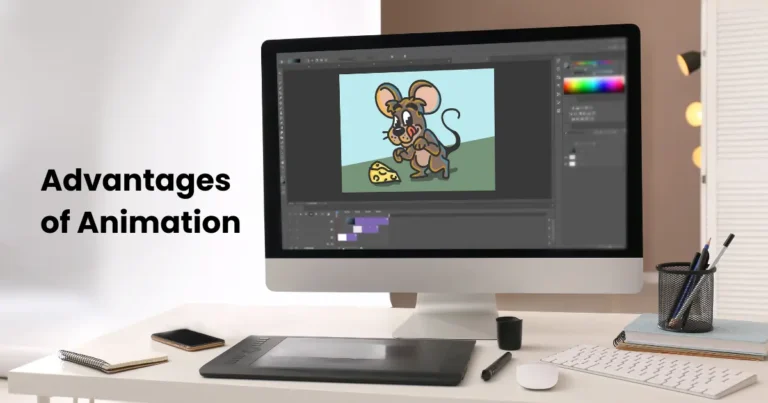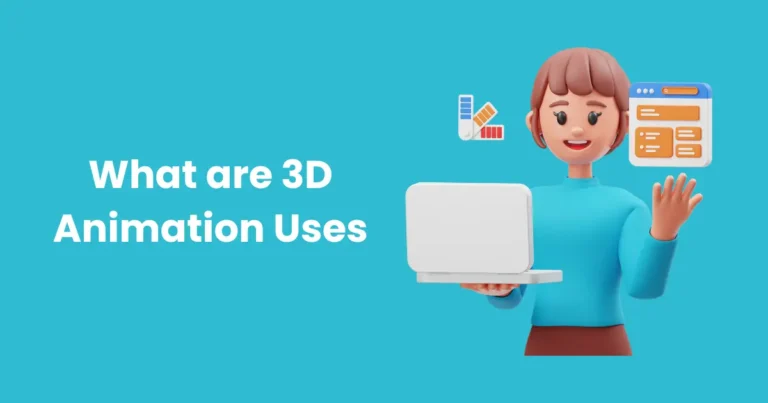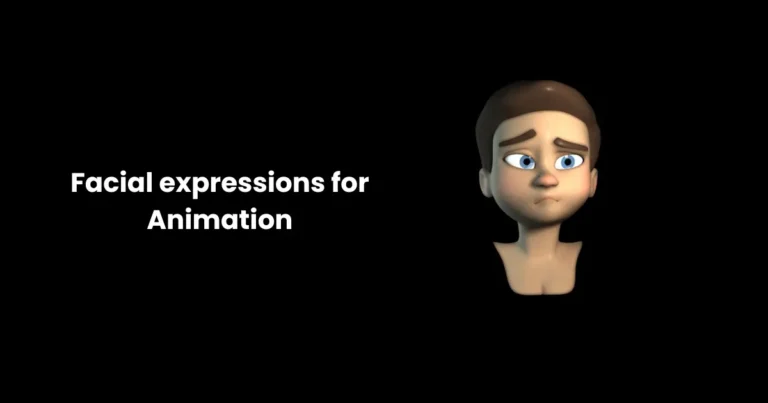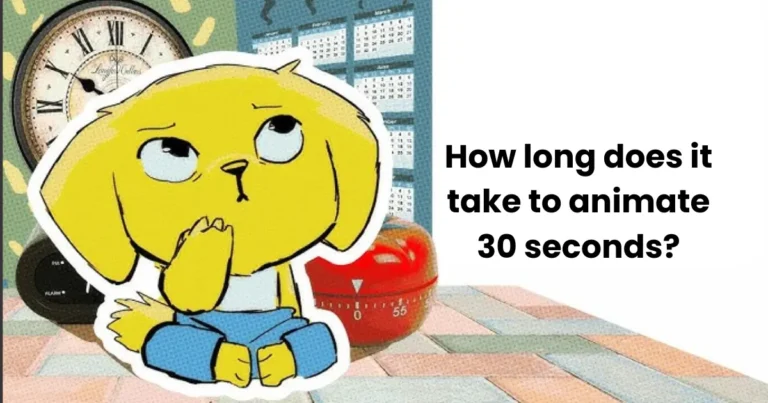Can Anyone Make an Animated Movie? | Make an amazing Animated Film by Yourself (2025)
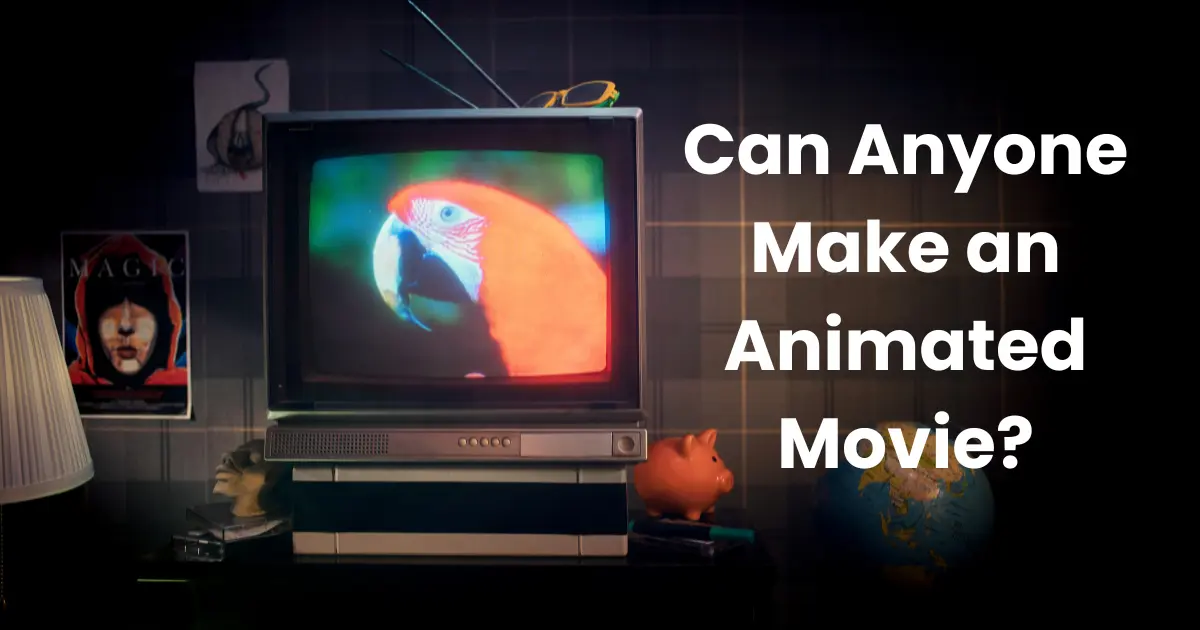
Contents
Animation has become a powerful and widely used medium for storytelling, from animated films like Toy Story to viral YouTube shorts. With advances in technology and the rise of user-friendly software, many people wonder: Can anyone make an animated movie? The good news is that with the right tools, a bit of creativity, and some dedication, yes, anyone can create an animated film.
However, the process isn’t as simple as pressing a button. It requires a combination of artistic skills, technical knowledge, and a strong vision. In this article, we’ll explore what it takes to bring an animated movie to life, the skills you need, the tools available, and whether or not it’s feasible for someone without a professional background to make an animated masterpiece.
Understanding the Basics of Animated Movies
Before diving into the world of animation, it’s important to understand the fundamentals of what makes an animated movie. Animation is the art of bringing images to life through movement, and it comes in many forms, each with its techniques and approaches. Whether you’re interested in creating your own animation or simply learning more about the process, here’s an overview of the basics.
What is Animation?
Animation is the process of creating the illusion of motion by displaying a sequence of slightly different images, or frames, in rapid succession. These frames, when viewed in quick order, create the appearance of continuous movement. Animation can be used to tell stories, convey ideas, or simply entertain. It can range from simple 2D cartoons to complex 3D films with realistic textures and lighting.
Types of Animation
Animation comes in several different styles, each with its unique characteristics and production methods. Understanding these types is essential when considering what kind of animated movie you want to create.
- 2D Animation: This is the traditional form of animation, where characters and scenes are created in two dimensions. 2D animation relies heavily on drawing skills and is typically created by animating individual frames by hand or using software. Classic animated films like The Lion King and Snow White are examples of 2D animation.
- 3D Animation: 3D animation uses computer-generated imagery (CGI) to create three-dimensional models of characters and environments. This type of animation gives depth and realism to the visuals, allowing for more complex and dynamic scenes. Blockbuster films like Frozen and Avatar are examples of 3D animation.
- Stop Motion: This animation technique involves photographing physical objects or puppets one frame at a time while making slight adjustments to their position. When these frames are played in sequence, they create the illusion of movement. Famous films like Coraline and The Nightmare Before Christmas were made using stop-motion animation.
- Motion Graphics: Motion graphics are animations that combine graphic design elements, text, and images. These animations are typically used for advertisements, tutorials, or explainer videos rather than for narrative-driven films. Motion graphics focus more on visual storytelling through typography, icons, and other design elements.
Understanding these different types of animation will help you determine which style suits your creative vision and skill set. Each type offers its unique opportunities and challenges, but all can lead to the creation of memorable, impactful animated films.
The Essential Skills Needed to Create an Animated Movie
Creating an animated movie is a complex and multifaceted process that requires a variety of skills. Whether you’re working alone on a small project or leading a team, certain abilities are crucial for bringing your animated film to life. While animation may seem like a purely artistic endeavor, it combines technical expertise, creativity, and storytelling. Below are the key skills needed to create a successful animated movie.
Drawing and Artistic Skills
Although not every animator is a professional artist, having a foundational understanding of drawing is extremely helpful. Whether you’re animating 2D or 3D characters, a good grasp of anatomy, composition, and movement will elevate the quality of your work. Even if you’re working with 3D software, many animations start with basic sketches or storyboards to visualize the characters, scenes, and overall look of the film.
Technical and Software Knowledge
Modern animation relies heavily on software, and proficiency in animation programs is a must. Whether you’re creating traditional 2D animations or 3D films, understanding the tools and technologies used in animation is essential. Some of the most common animation software include:
- Adobe Animate for 2D animation
- Blender and Autodesk Maya for 3D animation
- Toon Boom Harmony for both 2D animation and compositing Familiarity with these tools will allow you to bring your artistic ideas to life by manipulating models, characters, and scenes in digital space.
Storytelling and Scriptwriting
An engaging animated movie is driven by a strong narrative. Whether your animation is aimed at children, adults, or a general audience, compelling storytelling is key to keeping your viewers interested. Writing a script that includes dialogue, character development, and emotional beats is a crucial step in the pre-production process. Animation often requires creating a world and a plot that feels engaging through both visuals and dialogue, making scriptwriting an integral skill in creating an animated movie.
Sound and Music Production
While animation is visual, the auditory experience plays a significant role in immersing the audience. Sound effects, voiceovers, and music help set the tone of the film and can heighten emotional moments. If you’re producing your own animation, learning the basics of sound recording and mixing or collaborating with sound designers and composers will improve the overall quality of your work. Whether it’s voice acting for characters or composing an original score, integrating sound properly into your animation is essential.
These skills are foundational for animators and filmmakers at every level. Depending on the scale of the project, you may choose to specialize in one of these areas, or you might need to acquire a broad set of skills to manage the entire animation process. With determination and continuous learning, anyone can master these skills to create their own animated movie.
Tools and Software for Animation
The tools and software you choose to work with will significantly impact the quality and efficiency of your animated movie. Fortunately, the animation industry has seen tremendous growth in the development of accessible and powerful software, both for beginners and professionals. Whether you are creating 2D or 3D animations, there are a variety of tools available to help you bring your ideas to life. Below, we’ll explore some of the most popular and widely used animation tools for both 2D and 3D animation.

2D Animation Software | By which software can anyone make an animated movie?
For animators focused on creating traditional hand-drawn or vector-based 2D animations, these programs are industry standards:
Adobe Animate
- Best For: 2D vector animation
- Overview: Adobe Animate is one of the most popular programs for 2D animation. It allows for the creation of vector art, making it ideal for producing smooth, scalable animations. The program is user-friendly and integrates well with other Adobe products like Photoshop and Illustrator, which makes it a great choice for animators who need flexibility and efficiency.
Toon Boom Harmony
- Best For: Professional 2D animation
- Overview: Toon Boom Harmony is the industry standard for 2D animation, used by major animation studios. It offers a wide range of features, including advanced rigging, drawing tools, and effects. Harmony allows for traditional frame-by-frame animation, as well as digital cutout animation, making it highly versatile. Many high-quality TV shows and animated films are made with this software.
Krita
- Best For: Freehand 2D animation
- Overview: Krita is a free, open-source painting program that has increasingly gained popularity for 2D animation. It includes frame-by-frame animation tools, and its brush engine makes it perfect for artists who want to create hand-drawn animations with ease.
Pencil2D
- Best For: Beginners and simple 2D animations
- Overview: Pencil2D is a lightweight, open-source software for 2D hand-drawn animation. It’s perfect for beginners looking to get started with animation without investing in expensive software. It supports bitmap and vector graphics, making it easy to create traditional-style animation.
3D Animation Software
For those interested in creating 3D animations, the following programs are essential tools that offer advanced features for modeling, rigging, and rendering:
Blender
- Best For: Free, open-source 3D animation
- Overview: Blender is an incredibly powerful, free, and open-source 3D animation software that rivals industry-standard programs. It includes tools for modeling, rigging, texturing, animating, and rendering 3D objects. Blender also has a strong community of users, meaning there are plenty of tutorials and resources available. It’s a great option for both beginners and experienced animators.
Autodesk Maya
- Best For: Professional 3D animation
- Overview: Maya is one of the most advanced and widely used 3D animation software programs in the industry. It offers sophisticated modeling, texturing, lighting, and rigging tools, making it ideal for high-quality production. Maya is used by major animation studios for feature films, TV shows, and video games.
Cinema 4D
- Best For: Motion graphics and 3D animation
- Overview: Cinema 4D is known for its user-friendly interface and powerful tools for motion graphics, 3D animation, and visual effects. It’s a great choice for those who want to dive into 3D animation with a focus on motion graphics and special effects. Cinema 4D integrates seamlessly with Adobe After Effects, making it a popular choice for animators who specialize in motion design.
Other Animation Tools
In addition to the main animation software, several other tools and programs can help streamline the animation process:
After Effects (by Adobe)
- Best For: Compositing, visual effects, and motion graphics
- Overview: While After Effects isn’t primarily an animation tool, it’s often used in conjunction with other animation software for creating visual effects, compositing, and motion graphics. It’s particularly useful for post-production work, where you might add special effects, and transitions, and integrate 3D elements into your animation.
Storyboard Pro (by Toon Boom)
- Best For: Storyboarding and pre-production
- Overview: Storyboard Pro is specifically designed for creating detailed storyboards for animation. It helps animators plan out scenes, camera angles, and sequences before production begins. It’s a key tool for organizing an animation project and ensuring everything flows smoothly from start to finish.
Can Anyone Make an Animated Movie? Breaking Down the Barriers
The idea of making an animated movie can seem daunting, especially when considering the complexity of the animation process and the sheer amount of work involved. For years, animated films were the domain of large studios with massive budgets, advanced technology, and extensive teams of talented artists. However, with advancements in technology and the rise of more accessible tools, the barriers to creating your own animated movie have significantly decreased. So, can anyone make an animated movie? The answer is yes—thanks to modern technology, determination, and the right mindset, creating an animated movie is within reach for more people than ever before.
1. Affordable Tools and Software
In the past, animation was only accessible to those who had access to expensive software and equipment. Today, numerous affordable (and even free) tools make animation more accessible. Software like Blender (free), Krita, and Pencil2D allows anyone to start experimenting with animation, regardless of their budget. These tools are powerful enough to create professional-quality animations, with many indie creators and hobbyists using them to produce animated films and short films.
For those interested in 3D animation, Blender has emerged as one of the best free 3D animation tools, enabling users to create complex 3D models, rig characters, and render high-quality scenes. In the 2D world, tools like Toon Boom Harmony or Adobe Animate offer advanced features but come with user-friendly interfaces that make them accessible to newcomers.
2. Learning Resources and Tutorials
Another key factor in breaking down the barriers to animation is the sheer amount of learning resources available online. No matter where you are on your animation journey—whether you’re a beginner or have some experience—there is a wealth of free and paid tutorials that can teach you the essential skills needed to make an animated movie.
Platforms like YouTube, Skillshare, and Udemy host countless animation tutorials on everything from basic animation principles to more advanced techniques in 3D modeling and texturing. Many animation software providers also offer their own tutorials to help users get started. With dedication, anyone can learn to use these tools and eventually create their own animations.
3. The Power of Collaboration
While animating a movie by yourself can be a monumental task, the collaborative nature of animation opens the door for those without a complete skill set to work together. Many independent animators work in teams, with each person specializing in a different aspect of the animation process—such as character design, storyboarding, animation, sound design, and editing.
Today, it’s easier than ever to find collaborators, thanks to platforms like Fiverr and Upwork, where you can hire freelance animators, voice actors, and sound designers. You can also find communities of like-minded animators on social media platforms like Reddit, Discord, and Facebook, where you can share your work, get feedback, and find potential collaborators for your animated film.
4. Mobile and User-Friendly Apps
In addition to professional animation software, there are now several mobile apps and web-based platforms that make animation more accessible. Apps like Stop Motion Studio (for stop-motion animation) and FlipaClip (for 2D animation) allow users to create animations directly on their smartphones or tablets. These apps often come with user-friendly interfaces, making them perfect for beginners and hobbyists.
For people who may not have access to a computer or professional animation software, these mobile tools provide a convenient and portable option for animating anywhere, anytime. While these tools may have some limitations compared to desktop software, they’re still powerful enough to create compelling animations, and many amateur animators have created impressive short films using only their phones.
5. Creative Passion and Storytelling
One of the most important factors in making an animated movie is passion. Animation is, at its core, about telling a story through visuals, and creativity is the driving force behind every animation. Whether you have access to the latest software or a simple mobile app, the power of storytelling is in your hands.
As an animator, your ability to create a compelling story is more important than the tools you use. Many successful independent animated films were created by small teams or individuals with limited resources but extraordinary passion and creativity. From Aardman Animations’ stop-motion classics like Wallace & Gromit to indie animated films like The Secret of Kells, countless examples prove that with the right creative vision, anyone can make an animated movie.
Challenges You Might Face While Making an Animated Movie
While creating an animated movie is an exciting and rewarding endeavor, it’s not without its challenges. Animation is a complex art form that demands creativity, patience, and technical skill. From the initial concept to the final render, the process involves multiple stages, each with its own hurdles. Whether you’re an independent animator working solo or part of a small team, here are some of the common challenges you might face when making an animated movie.

1. Time-Consuming Process
Animation, especially hand-drawn or 3D animation, is an incredibly time-intensive process. Each second of animation often consists of 24 frames, meaning that for just one minute of finished animation, you may need to create over 1,400 individual frames. For 2D animation, this might involve drawing and redrawing scenes by hand. Even in 3D animation, rigging and posing characters, adding textures, and rendering can take hours or even days for a single shot.
This time commitment can become overwhelming, particularly when working on a feature-length film. Maintaining momentum and staying focused on the long-term goal can be a challenge, especially for independent creators without a team to help share the workload. Proper planning, scheduling, and task management are crucial to keeping the production on track.
2. Technical Difficulties and Software Learning Curves
Animation requires proficiency with complex software and tools, and each software comes with its own learning curve. Whether you’re working with Blender for 3D modeling or Toon Boom Harmony for 2D animation, there can be a steep learning curve, especially if you’re new to the software or animation in general.
Even with the best tools, technical issues can arise—software crashes, corrupted files, rendering errors, or problems with hardware can all interrupt the production process. These setbacks can be frustrating and cause delays, especially if you don’t have a team of technical experts to resolve the issues.
3. Budget Constraints
Creating an animated movie often requires financial investment, whether it’s for software, hardware, or paying collaborators. For independent creators or small studios with limited budgets, managing finances can be a significant challenge. You might not have the same resources as large animation studios, and this can affect the quality of the animation, the hiring of skilled professionals (like voice actors or sound designers), and the ability to distribute the movie.
Crowdfunding platforms like Kickstarter and Patreon can provide some financial relief, but they require substantial marketing and outreach efforts to secure enough funding. Budget constraints may also limit your access to top-tier software, hardware, or professional animators, which can be frustrating if you’re aiming for high production values.
4. Maintaining Consistency and Quality
One of the most critical aspects of animation is maintaining consistency throughout the project. Whether it’s the design of characters, backgrounds, or the pacing of the story, consistency ensures that your animation feels cohesive and professional. Inconsistencies—like characters changing appearance between shots or backgrounds not matching the style—can disrupt the viewing experience and take your audience out of the story.
In larger projects, especially those with many collaborators, it can be difficult to maintain a uniform style. Regular communication, detailed reference materials, and an organized workflow are essential to keep the project aligned with your vision.
5. Creative Burnout
The long hours, complex problem-solving, and repetitive tasks involved in making an animated movie can lead to creative burnout. As the animation process stretches on, it’s easy to feel drained or uninspired, especially when the project feels far from completion. This can result in creative blocks, where it becomes difficult to stay motivated or think of new ideas to push the story or animation forward.
To avoid burnout, it’s important to take regular breaks, set achievable goals, and perhaps even collaborate with others who can offer fresh perspectives and new ideas. Keeping a balance between the technical and creative aspects of the project can also help prevent feeling overwhelmed by the demands of animation.
Tips for Aspiring Animators
Becoming an animator is an exciting journey that requires a combination of technical skills, creativity, patience, and a love for storytelling. Whether you’re a beginner just starting out or an experienced animator looking to improve your craft, here are some essential tips to help you succeed in the world of animation.

1. Learn the Fundamentals of Animation
Before diving into complex projects, it’s crucial to understand the foundational principles of animation. Classic animation principles, such as squash and stretch, anticipation, follow-through, and timing, are essential to creating fluid, believable animations. These principles were first introduced by Disney animators and remain the core of all types of animation today.
Mastering these basics will give you the skills needed to create more realistic, engaging animations, whether you’re working in 2D or 3D. A solid understanding of anatomy, movement, and physics also plays a key role in making your animations feel grounded and natural.
2. Start Small and Build Your Portfolio
As an aspiring animator, it’s important to start small and work your way up. Instead of trying to animate an entire feature film right away, focus on creating short animations, scenes, or loops that you can use to build your portfolio. A strong portfolio is one of the best ways to showcase your skills and attract potential clients or employers.
Start with simple animations, such as bouncing balls or walking cycles, to practice the fundamentals. As you gain confidence and experience, you can gradually tackle more complex projects, such as character animations, facial expressions, and dialogue scenes.
3. Experiment with Different Animation Styles
There’s no one-size-fits-all approach to animation. Different animation styles—such as traditional 2D animation, 3D animation, stop-motion, and motion graphics—require different techniques and tools. As you progress in your animation journey, experiment with a variety of animation styles to find the one that resonates with you.
Trying out different styles will not only broaden your skills but also help you develop your own unique style. Don’t be afraid to step outside your comfort zone and push the boundaries of your creativity.
4. Embrace Technology and Software
Modern animation heavily relies on advanced software and tools. While learning animation software may seem daunting at first, it’s essential to familiarize yourself with industry-standard programs. Start with user-friendly animation tools like Toon Boom Harmony, Blender, or Krita before diving into more complex software.
Take the time to learn the features of your chosen animation software, such as rigging, modeling, lighting, and rendering. There are plenty of free online tutorials to guide you through the learning process. As you become more proficient with the software, you’ll be able to bring your creative ideas to life more efficiently.
5. Focus on Storytelling
Animation is about more than just drawing or modeling characters—it’s about telling a story. A well-crafted story is at the heart of every successful animated film, regardless of the style or medium. Whether you’re animating a short clip, a commercial, or a feature film, make sure you understand the story you’re trying to tell.
Think about the emotions, themes, and messages you want to convey through your animation. Create characters with depth, and ensure that their actions, expressions, and movements align with the narrative. Strong storytelling will keep your audience engaged and invested in your work.
6. Practice, Practice, Practice
Like any skill, animation requires continuous practice to improve. The more you animate, the better you will get. Make time to create animation regularly, even if it’s just small exercises or personal projects. Experiment with new techniques, challenge yourself with different types of animations and learn from your mistakes.
Animating can be a lengthy and repetitive process, but consistency and perseverance are key to growth. The more you practice, the more you will learn about timing, movement, and your own style.
Conclusion
In conclusion, the world of animation is vast and filled with opportunities for aspiring animators. While the process of creating an animated movie can be complex and challenging, it is also incredibly rewarding for those willing to put in the effort. The answer to the question, can anyone make an animated movie is YES. With the right tools, dedication, and continuous learning, anyone can embark on this exciting journey. By mastering the fundamentals, honing technical skills, and embracing creativity, aspiring animators can transform their ideas into captivating visual stories that resonate with audiences. The key is to start small, stay patient, and keep pushing boundaries.
Ultimately, animation is not just about the software or technical skills—it’s about storytelling and passion. With the rise of accessible tools and online resources, the barriers to entering the animation world are lower than ever before. Whether you dream of making your own animated short, or feature film, or working for a major studio, the path is open to those who are determined and willing to learn. The future of animation is bright, and the possibilities for innovation and creativity are endless for anyone ready to take that first step. So, if animation is your passion, there’s no better time than now to dive in and start creating.

